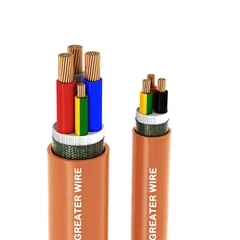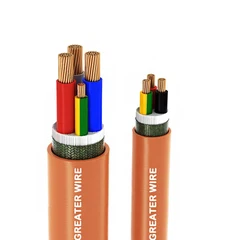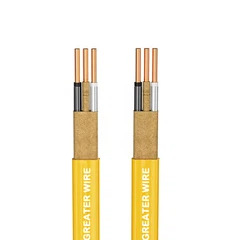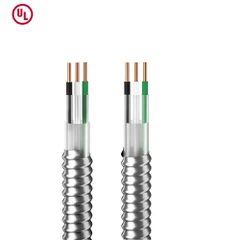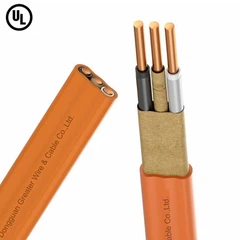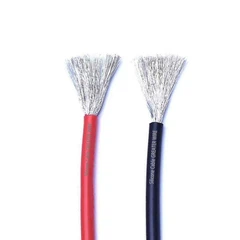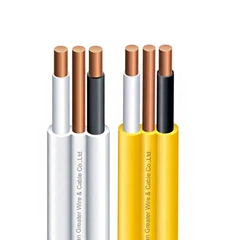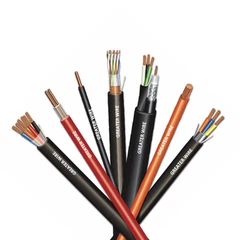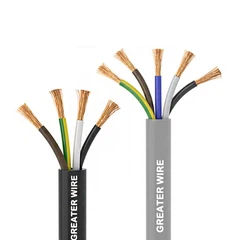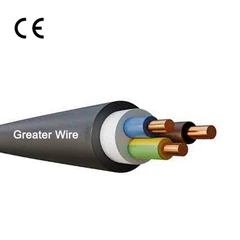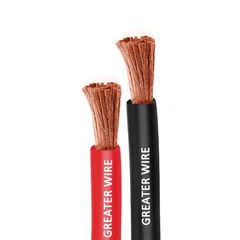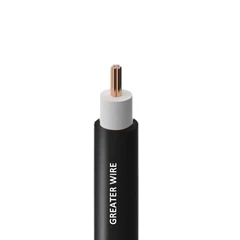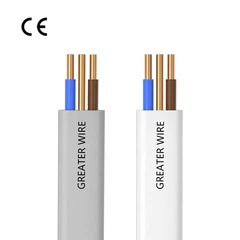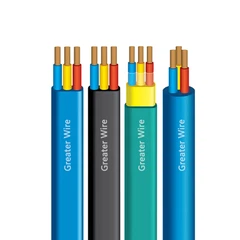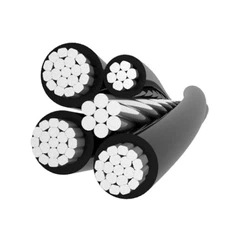1. What Are RHW, RHW-2, USE-2, and RHH?
RHW, RHW-2, USE-2, and RHH are types of building wires certified under the U.S. National Electrical Code (NEC) and UL (Underwriters Laboratories) standards. They are widely used for power transmission, building wiring, solar systems, and electrical controls. These cables differ in temperature ratings, insulation materials, and installation environments, making them suitable for various commercial and industrial applications.
1.1 RHW
RHW is a cable insulated with thermoset rubber, offering good heat resistance (rated for 75°C) and water resistance. It is suitable for dry, damp, and underground installations. RHW typically consists of a single copper or aluminum conductor and must be installed in conduit. It is widely used in commercial buildings and light industrial projects.
Key Features:
Water and moisture resistant, suitable for underground
Installed inside conduit or raceways
Voltage rating: 600V
1.2 RHW-2
RHW-2 is an upgraded version of RHW with a higher temperature rating of 90°C, capable of stable operation in damp or high-temperature environments. It uses rubber insulation treated for enhanced durability, suitable for more demanding industrial environments and outdoor exposure.
Key Features:
Higher temperature rating (up to 90°C, stable in damp conditions)
Suitable for outdoor exposure
Commonly used in power plants, refineries, and other high-temperature areas
1.3 USE-2
USE-2 is designed specifically for underground service entrance, such as residential power distribution. It usually has cross-linked polyethylene (XLPE) insulation, offering excellent water resistance, UV protection, and mechanical durability. USE-2 can be installed underground or above ground without conduit.
Key Features:
Direct burial capable, no conduit required
UV resistant for outdoor exposure
Typically aluminum conductor for lighter weight and cost-effectiveness
Commonly used in residential power and solar photovoltaic systems
1.4 RHH
RHH is a rubber-insulated wire designed for high-temperature dry environments. It has good flame-retardant properties and is often used inside control panels and distribution boxes. RHH is not suitable for underground or damp locations.
Key Features:
High temperature rating (90°C), ideal for dry environments
Strong flame-retardant performance, suitable for dense wiring
Not recommended for outdoor or damp locations
Thicker insulation for enhanced safety
Understanding these definitions lays the groundwork for comparing their construction, specifications, and practical applications.
2. Key Construction and Technical Specifications Comparison
| Type | Conductor Material | Temperature Rating | Water Resistance | Installation Location | Special Features |
|---|---|---|---|---|---|
| RHW | Copper/Aluminum | 75°C | High | Underground, conduit | Heat and moisture resistant |
| RHW-2 | Copper/Aluminum | 90°C | High | Damp/dry environments | High temperature stability |
| USE-2 | Mostly Aluminum | 90°C | Very High | Direct burial underground | UV resistant, direct burial |
| RHH | Mainly Copper | 90°C | Moderate | Indoor dry locations | Flame retardant |
Technical Highlights:
Insulation Materials: Thermoset rubber or XLPE
Voltage Rating: Generally 600V
Fire and Water Resistance: Complies with UL 44, UL 854, etc.
3. Typical Applications and Installation Methods
Selecting and installing the correct wire is key to the safety and efficiency of electrical systems. Below are the typical use cases and installation guidelines for each cable type:
3.1 RHW Applications and Installation
Applications:
Main power feeders in commercial buildings
Underground distribution systems
General power wiring in industrial plants
Outdoor cable trays (with protection)
Installation:
Must be installed inside conduit or cable trays
Suitable for aboveground or underground wiring
Ideal for moist and warm environments, but not for direct exposure
3.2 RHW-2 Applications and Installation
Applications:
High-temperature power distribution like boiler rooms and motor rooms
Power plants and refinery environments
Wiring from solar inverters to distribution panels
Floor feeders in commercial buildings
Installation:
Can be installed in conduit or cable trays
Suitable for damp, corrosive environments
Can be installed exposed outdoors (with some UV resistance)
3.3 USE-2 Applications and Installation
Applications:
Residential underground service entrance wiring
Solar photovoltaic system wiring: from modules to inverter
Farm and outdoor lighting wiring
Power supply to remote structures (garages, sheds)
Installation:
Suitable for direct burial without conduit
Can be exposed above ground with UV protection
Easy installation, ideal for residential and renewable energy projects
3.4 RHH Applications and Installation
Applications:
Control panels and distribution box internal wiring
Medical facilities and telecom sites requiring high flame retardance
Commercial building feeders in dry environments only
Installation:
Restricted to indoor dry environments
Installed via trays, ducts, or enclosed spaces
Not suitable for underground or damp locations, avoid outdoor exposure
Understanding the characteristics, applications, and installation methods of each wire type allows engineers and purchasers to optimize wiring plans, enhancing safety and cost efficiency.
4. Summary of Key Differences Between RHW, RHW-2, USE-2, and RHH
| Feature | RHW | RHW-2 | USE-2 | RHH |
|---|---|---|---|---|
| Installation Area | Damp, underground | General | Underground direct burial | Indoor dry only |
| Temperature Rating | 75°C | 90°C | 90°C | 90°C |
| UV Resistance | Moderate | Good | Excellent | Moderate |
| Flame Retardance | Moderate | Good | None required | Strong |
| Cost | Moderate | Higher | Moderate | Higher |
RHW vs RHW-2: Main difference is temperature rating.
RHW/RHH vs USE-2: USE-2 is uniquely suitable for direct burial and UV resistance.
RHH Advantage: Strong flame resistance for indoor use.
Dongguan Greater Wire & Cable Co., Ltd. is such a partner. We have multiple international certifications such as UL, CE, SAA, VDE, TÜV, ISO, etc., which can support customers to easily deal with various bidding, acceptance and export needs. Our certification system covers every link from production process to quality inspection, ensuring that every meter of cable has international compliance. Welcome to contact us now.

